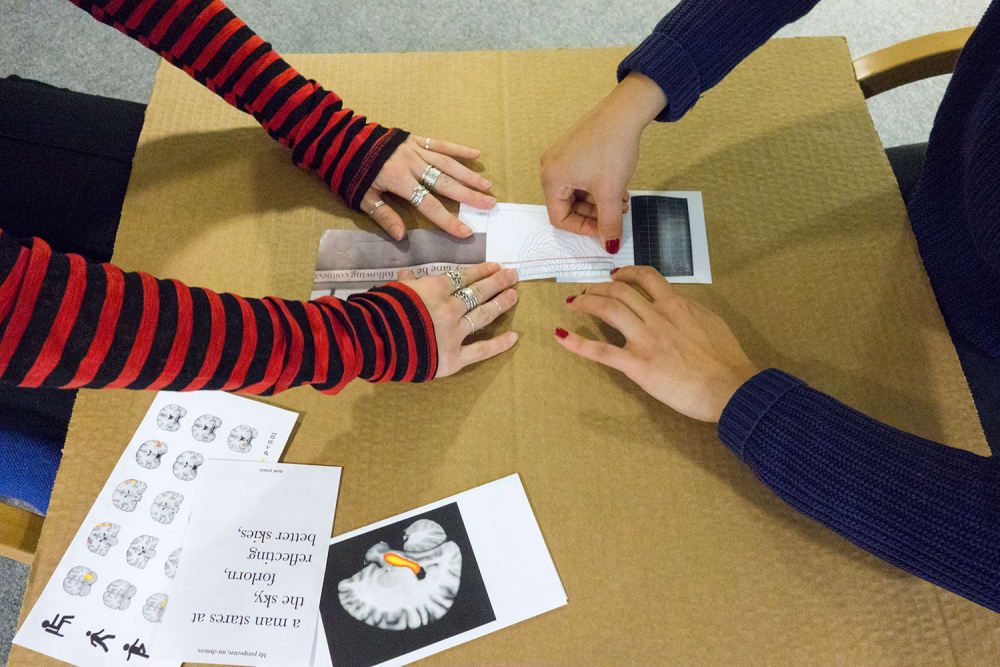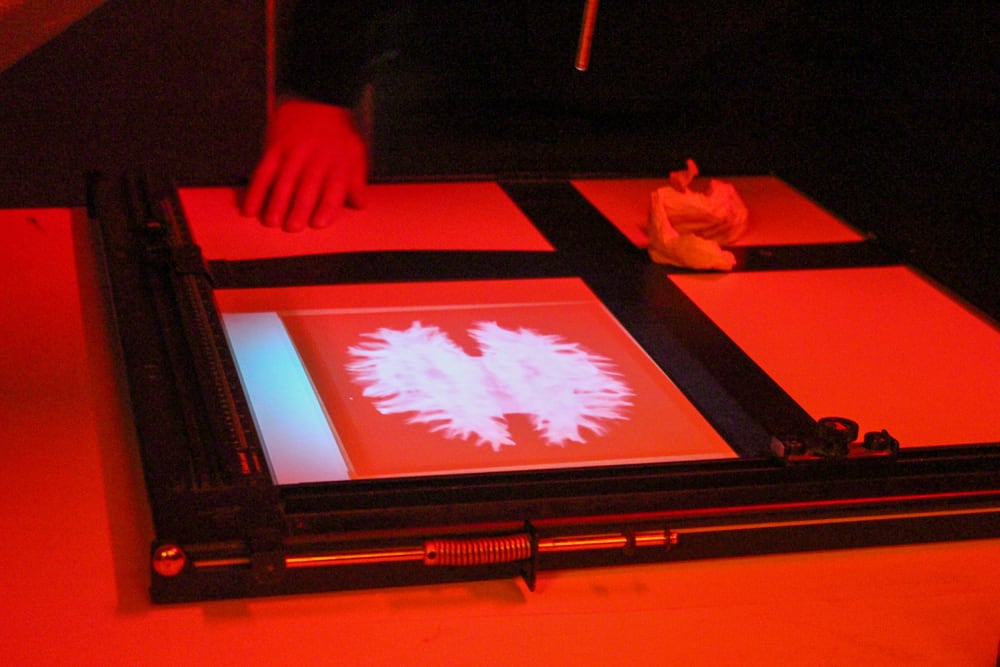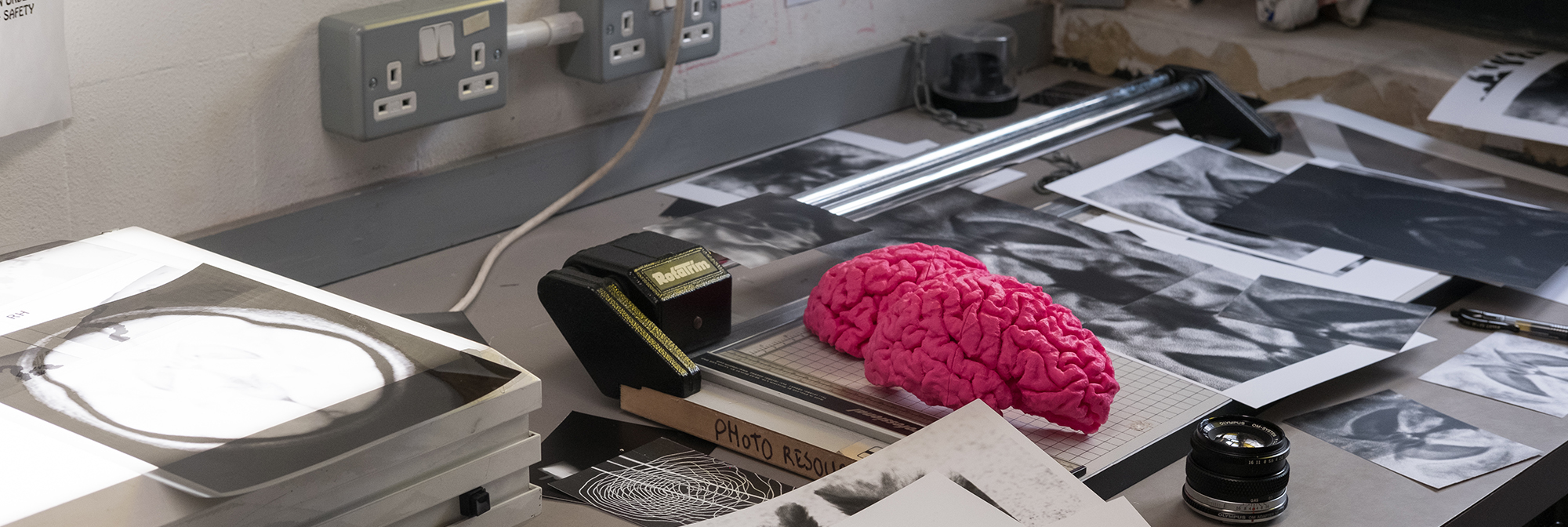It’s not often that you will come across a project that brings together artists and neuroscientists, but experimental project Shared Language devised by Sigune Hamann and Jonathan Kearney does exactly this. A collaboration between students from art and design at Camberwell College of Arts and neuroscientists from Oxford University, the aim of project is to encourage conversation and debate across disciplines.
Sigune, an artist and Reader in Art and Media Practice, and Jonathan, Postgraduate Programme Director at Camberwell, developed the project together using their extensive experience of innovative learning models developed while running a fine art master's course which combined both studio and online practice since 2004.

, Camberwell College of Arts, UAL | Photograph: Sigune Hamann
The project is part of Sigune’s residency in Experimental Psychology at Oxford University where she has worked with neuroscientist Professor Kia Nobre from the Brain & Cognition Lab and Oxford Centre for Human Brain Activity to look at perception and attention. As part of her research she has explored how the playful, experimental treatment and physical handling and viewing of images can test and shift our perception of ourselves relating to others.
Professor Kia Nobre commented: “Our perception is highly limited; we derive only a few elements/objects/items from the environment/surroundings at each moment, which we stitch together into cohesion and carry forward into the fabric of our cognition. In counterpoint, our perception is highly adaptive, picking out the elements that matter to us in a given situation. This selective guidance of perception, which we call ‘attention’, involves signals from our goals, expectations, memories, motivations, and emotions proactively and dynamically shaping what we come to perceive and remember.”

For this project, two workshops were held which were styled as ‘conversations’ between the artists and the scientists. At Camberwell, the students were paired up and asked to listen to each other describe their research and practice. During these 10 minute conversations they displayed and arranged images of their work on a cardboard sheet balanced jointly on their knees, which were then photographed.
While at the Oxford Centre for Human Brain Activity, the artists and scientists used an MRI scanner to produce 3D images of a human brain at work. To generate the images, one of the Oxford students volunteered to have their brain scanned in the MRI scanner, while students were in contact with them from the control room. The volunteer performed simple tasks such as moving their fingers which resulted in changing images visible on different monitors as activity took place in the different regions of the brain.
Sigune commented: “The immediacy was impressive, but also the complexity of the 3D images and the reading and interpretation of these at different angles, coordinates and scales. It gave us a sense of how scientific images are constructed. We used similar images later as a starting point in the Camberwell workshops.”
These ‘conversations’ developed into collaborations in the Camberwell darkroom and printmaking workshops. Making etchings and photograms from scientific imagery, the students explored material aspects of the brain and form and meaning arising through their exchanges.

Students involved in the project ranged from undergraduate, postgraduate, PhD to early-career researchers. One student said of the process: “The process from the start was interesting in that I felt, maybe unnecessarily, that I might have to explain what I do slightly differently than when speaking to others within our own course. The actual process showed that we used a lot of the same language to describe very different things, particularly when talking about things like association and connection.”
Another highlighted: “It was great to meet people who study a completely different discipline and still find a huge amount of common ground and shared interests. I liked the use of images as shared communication and I thought it was interesting that the art students perceived some interesting things in our science images that I wouldn’t necessarily have noticed. I also felt like I gained a new perspective on the images we provided after having worked with them in a different way.”
Find out more about BA Graphic Design

